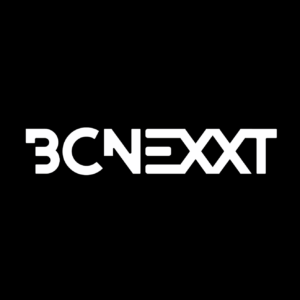TMT Insights shifts content library management from manual to automatic
Cloud-based collaboration combines machine learning, product-agnostic tools, and industry expertise to accelerate opportunities for total library optimization

Brett Beers, SVP, Engineering, TMT Insights
The current state of content library management is either an insurmountable challenge or an unprecedented opportunity – it’s all a matter of perspective. An ever-increasing amount of content is being produced, stretching libraries to near breaking points with legacy formats and duplicate versions, so the overwhelming efforts to resolve the issues can feel daunting…or we can simply take advantage of the growing number of collaborative tools available to the media and entertainment (M&E) industry.
Suddenly, library management quickly evolves into a logical set of automated processes that can decrease the time it takes to reconcile large asset catalogs and archives, and help content owners manage, deliver, and monetize their valuable content in the most efficient ways possible.
The latter approach is clearly emerging as the operational choice for M&E organizations. That’s certainly true for TMT. We are continually fostering new collaborations to build a more open and accessible industry, and this philosophy is at the core of one of our recent technology partnerships: a joint solution with BitPress to reimagine content library management.
BitPress and Polaris transform library management
Through a combination of BitPress tools, TMT’s Polaris operational management software and managed services expertise, content teams are able to manage and visualize their content library assets at any stage alongside every other aspect of their content and media supply chain — all from a single user interface. In addition to getting a better handle on library assets, content owners can realize a significant bump in quality control and a streamlined process for meeting the delivery specification requirements of networks, streaming services and production companies.
As a cloud-based managed service solution, we’re also providing an accelerated path for organizations to migrate their operations to the cloud. This partnership streamlines and automates the identification, analysis, and conformance of inbound media assets required for high-volume catalog reconciliation and bulk distribution projects.
Back to the current state …
Every library is in a different state of readiness with varying sizes and scopes, but the one constant challenge is there’s usually a tremendous amount of legacy content and duplicate versions. This includes localized language cuts, TV and streaming versions, are they 1080P, 4K, PAL or NTSC, REC 709 and on and on. All these files in different locations need to be matched and many may be nearly 95% the same except for differences such as opening or closing credits, or specific scenes. However, to go through individual pieces of content by hand to find bit-for-bit matches, or to determine if two pieces of content conform, is expensive and time consuming. Plus, redundant versions take up expensive storage space.
The integration with BitPress delivers machine learning features to help understand how pieces of content relate to each other or, more important, when they don’t. We can detect legacy formats, duplicates or older versions, keep the best and delete the rest. We can determine with a high degree of confidence that two pieces of content are the same and BitPress will even conform them. Now, we can set up a pipeline image conforming process that’s able to learn over time to identify similar pieces and alert operators whether or not they should be ingested as a pristine piece of content, categorized and organized properly.
Visibility is everything
Polaris acts as the visibility layer across the content management workflow. Team members can visualize and understand everything through a “single pane of glass” view that describes where content is, and what’s happening at any given moment at any point in the media supply chain, or in the business overall.
When an organization is running a process to normalize its content, that could involve hundreds of thousands of pieces of content. Not everyone is willing, or able, to go to a MAM or cloud storage bucket to find content. Polaris is that normalization layer giving everyone – whether they’re highly technical or not – a view into the entire process, while organizing data in a highly contextual manner. Essentially, it translates the content workflow into a common language so everybody is talking about things in the same way.
In a business where success often is measured in speed, having a library that’s fully reconciled, normalized and optimized means that those hundreds of thousands of content pieces can be prepped and ready for delivery in days or weeks, not months or even years. Add to that any pre-project ramp-up time to assemble the necessary human resources, which for larger jobs could be six to eight months, and the need for effective management methods are more apparent.
A common language also is critical when dealing with customers’ widely varying house specs and program delivery requirements. One streaming service may specify every title must be delivered in MXF, while others may accept a wider variety. The commonly used ProRes format is still a common standard, while the newer EIDR format is growing in popularity.
Clients are getting stricter about delivery specs, which affects certain production decisions about metadata output or how data is organized, normalized, and cataloged. The bottom line is that, once a library is reconciled and normalized, varying delivery specs cease to be a challenge. Now, it’s really just a matter of a few simple adjustments to handle a specific endpoint.
A Future in the cloud
Looking ahead to M&E’s future in the cloud, content library management aligns with a solid cloud migration plan. In fact, the cloud makes library management easier as the challenges of decades past are erased. With the cloud, any piece of content can easily be turned into any other piece of content, with some exceptions. That’s just one example of where the industry is headed, and why cloud-based content library management is so important to an organization’s future success.









